"Modern Bodies" at the Accademia Gallery in Venice. Leonardo's Vitruvian Man and many other treasures
- The Introvert Traveler
- May 24
- 7 min read
Updated: May 25
Date of visit : May 23, 2025
My rating : 20/10
Duration of the visit : one and a half hours
Where : Accademia Galleries, Calle della Carità, 1050, 30123 Venice VE

What is the most universally known, most influential, most decisive image in Western iconography? More than Leonardo 's Mona Lisa, more than Michelangelo 's Creation, more than Hokusai's so-called Wave? (Yes, I know, Hokusai was Japanese, but the influence of his work on Western culture is such that it is now part of Western culture itself.) I believe that this scepter belongs to Leonardo's Vitruvian Man, a graphic work that has transcended its technical and aesthetic function to become a topos and the enunciation of a philosophical principle; unlike the other works cited, although universally famous, the Vitruvian Man marks the moment in which Man, in the conception of the human being himself, assumes more than ever a centrality with respect to the rest of the Universe. But the Vitruvian Man, in addition to being the most immanent image in global iconography, is also the most elusive, because it is preserved in extremely rigorous environmental conditions at the Gallerie dell'Accademia in Venice and is only on very rare occasions shown to the public. The exhibition "Modern Bodies" is one of these occasions.
The exhibition “Modern Bodies. The Construction of the Body in Renaissance Venice” , set up at the Gallerie dell'Accademia in Venice from 4 April to 27 July 2025, deals with the theme of the human body in Renaissance thought. It is not limited to the mere celebration of the classical aesthetics of the human figure, but delves into the cultural and scientific genealogy that allowed the body to become, between the end of the Middle Ages and the full affirmation of the Renaissance, the perspectival and conceptual center of the universe .
The Body Between Science and Metaphysics: A Paradigm Shift
The exhibition revolves around an epochal transformation: the passage from the medieval vision of the body as the seat of sin and fragility to the Renaissance vision of the body as a perfect machine, instrument and manifestation of cosmic harmony (and object of desire). This change was not only aesthetic but also epistemological: the body became more and more frequently the object of empirical study, dissection, measurement. It was a conceptual reversal that saw the convergence of scientific investigation, technical drawing, philosophical reflection and artistic representation.
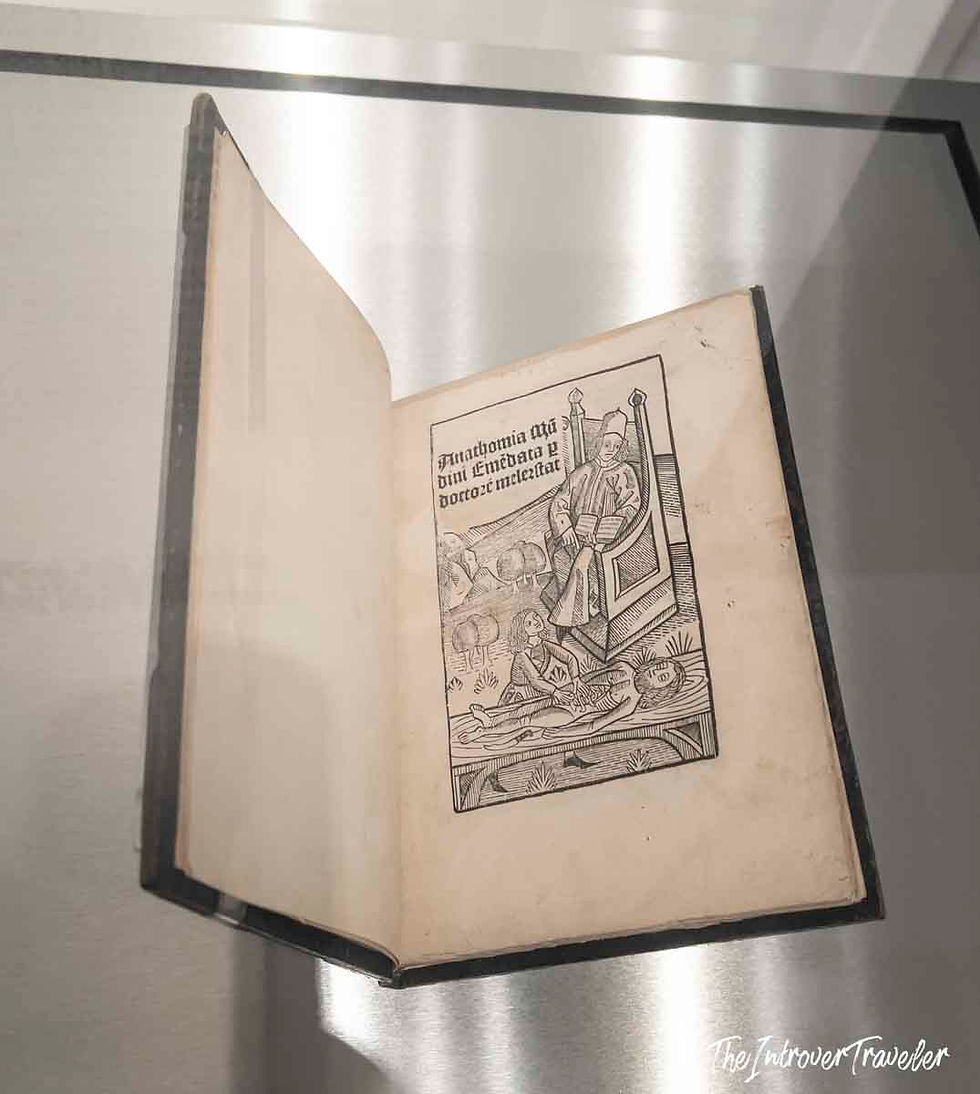
In this context, the exhibition presents a close dialogue between the great protagonists of anatomical science and perspective art. Figures such as Mondino de' Liuzzi, author of the very important Anathomia in the 14th century, are here recovered as precursors of that culture of dissection that, starting from the 15th century, would profoundly influence artists and scholars. Their legacy reverberates in the drawings of Leonardo da Vinci , who in his artistic anatomy sought the soul in the mechanism of the muscles and the curvatures of the bones.
Leonardo's Vitruvian Man and Piero's Perspective: Between Dissection and Proportion
The highlight of the exhibition is undoubtedly the reappearance of the Vitruvian Man , a work that alone sums up the entire spirit of the exhibition. Displayed after six years, and rarely accessible to the public for conservation reasons, Leonardo da Vinci's famous sheet shows the Renaissance yearning to inscribe the human body in the circle and the square, or to make it the unit of measurement of the universe.
Seeing this legendary work before your eyes, so close that you can study the texture of the paper, the nuances of the ink, staggers the senses; drawing is undoubtedly the means of expression that more than any other allows you to dialogue with the artist's intimacy; the science of graphology teaches how the stroke of the hand manifests personal expression; while in painting the stroke is hidden in layers and nuances of color, drawing is purely immediate. This exhibition, just over three meters apart, offers the opportunity, probably unique, to admire two of the greatest graphic works by Leonardo and Michelangelo.
Next to it, Leonardo's anatomical drawings appear as pages of an unwritten treatise, in which dissection is not only a cognitive tool but a poetic gesture. The body is dissected with the same spirit with which a polyphonic madrigal is broken down, in search of an interior music.
Alongside Leonardo, the exhibition displays numerous graphic and bibliographical treasures, starting with the autograph manuscript of Piero della Francesca’s “De Prospectiva Pingendi”, exceptionally lent by the Palatina Library in Parma. Piero, a mathematical painter and theoretician of space, was among the first to conceive of the body as a geometric entity, to be ordered according to rational principles. In this convergence between anatomy and perspective, the exhibition offers a historiographical model that is as refined as it is coherent: understanding the body passes through its regulated representation .
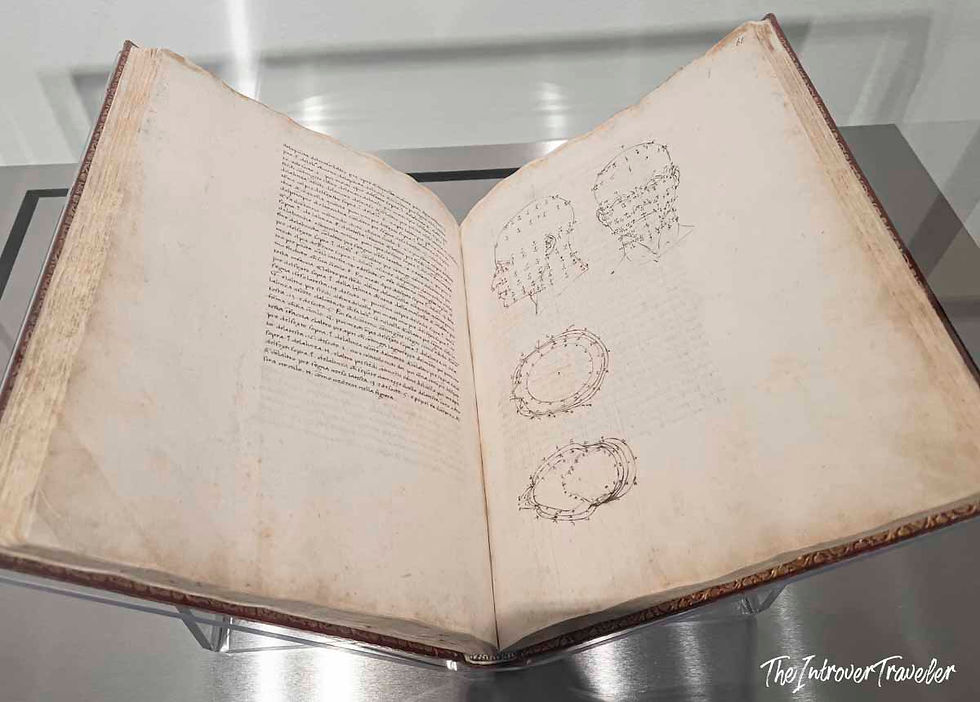
Speaking of the Vitruvian Man, a digression comes naturally to me: standing, keeping watch at the side of the work, enclosed in an evidently impregnable case, there is a guard, an employee of the Academy; he is an extremely affable and pleasant person, even if a bit talkative, and he talks at length about this work that he has been watching over, alternating with his colleagues, for decades, declaiming with emotional transport the sincere affection that, after so many years, binds him to "Baby Jesus" (this is supposedly the nickname with which the Academy employees call Leonardo's drawing, to express the pure love and care they dedicate to this small, priceless artifact); he repeats with clockwork periodicity, to all visitors, that the circle was drawn freehand by Leonardo, that the sheet is often half the size of a common A4 sheet, and anecdotal information of this type, mostly incorrect; when asked about some basic information about the work, the guard hesitates, stammers, rambles on like an unprepared student. The job of a guard is obviously not that of an art critic, nor of a historian, nor of a tourist guide, but it is surprising to note the experience of a man who has devoted his entire life to ensuring the safety of a precious art object, to the point of feeling the need to tell strangers of the sincere affection that binds him to that object to which he has dedicated real parental care without however feeling the need, in entire decades, to study, to learn even just some basic information; I found the story rather suggestive, I think it would be a subject for a good film.
Vesalius, Dürer, Michelangelo: the body as a field of tensions
Another very important nucleus is the one dedicated to Andreas Vesalius, father of modern anatomy . The Galleries exhibit, in a monumental setting, numerous copies of the “De Humani Corporis Fabrica” — a masterpiece of Renaissance scientific publishing. The simultaneous presence of several editions, accompanied by instruments, woodcuts and sixteenth-century prostheses, allows us to observe not only the evolution of medical thought, but also the editorial and visual success of a work that profoundly influenced the way of conceiving and depicting the inside of the human body.
In dialogue with Vesalius, the drawings and body studies of Albrecht Dürer emerge, who sought a formula of mathematical beauty in the naked man, and those of Michelangelo , of whom the very rare drawing of the Libyan Sibyl stands out, on loan from the MET in New York: a tense, muscular, energetic female body; the Libyan Sibyl is, in my opinion, one of the most effective subjects of the Sistine Chapel ceiling and this preparatory study, among the most famous drawings by Michelangelo that have survived to this day, is a work that I have wanted to see for some time; finding myself a few centimetres from a sheet of paper worked on by Michelangelo, studying his line up close is a unique emotion and this is certainly among his best surviving drawings (even if the one in the Albertina in Vienna is very close to it). In this work, the flesh seems to vibrate under the paper, testifying to the way in which Michelangelo fuses anatomy and spirituality.
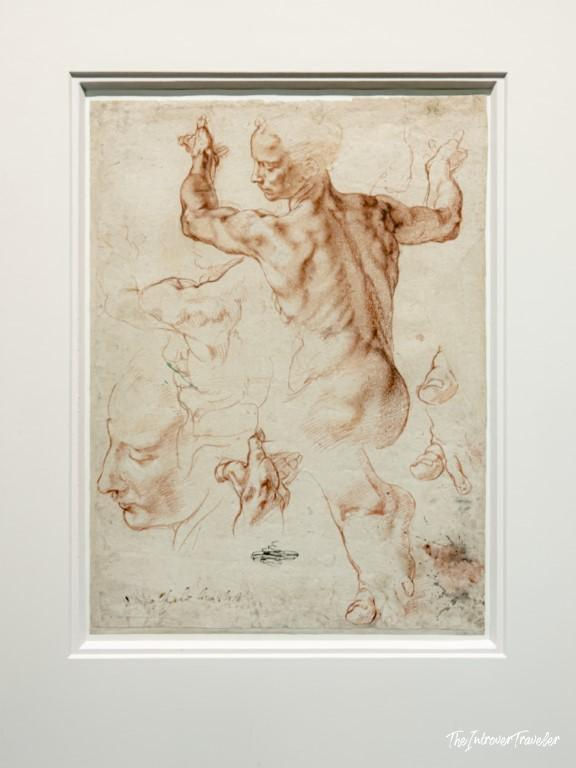
The Polyphilus
In a Venetian exhibition that dedicates ample space to book heritage, "the most beautiful book ever printed" could not be missing: the Hypnerotomachia Poliphili , printed by Aldo Manuzio in 1499. This enigmatic incunabulum, attributed to Francesco Colonna, constitutes one of the most sophisticated allegories of erotic-artistic desire of the Renaissance. The dreamlike narration, built on a mixed language of Latin, Greek, vernacular and neologisms, is a labyrinthine journey through architecture, sculptures, gardens and idealized bodies. The woodcuts that accompany it offer a visual model in which the human body, often naked, is at the same time an aesthetic object, an initiatory symbol and a vehicle of knowledge.
The Hypnerotomachia Poliphili thus represents a fundamental piece in the construction of the body as an object of imagination and cultural direction. In the exhibition, it dialogues ideally with the tables of Vesalius, with the drawings of Michelangelo and Leonardo, but above all with that Renaissance idea according to which the corporeal form is inseparable from its mythographic and symbolic interpretation.
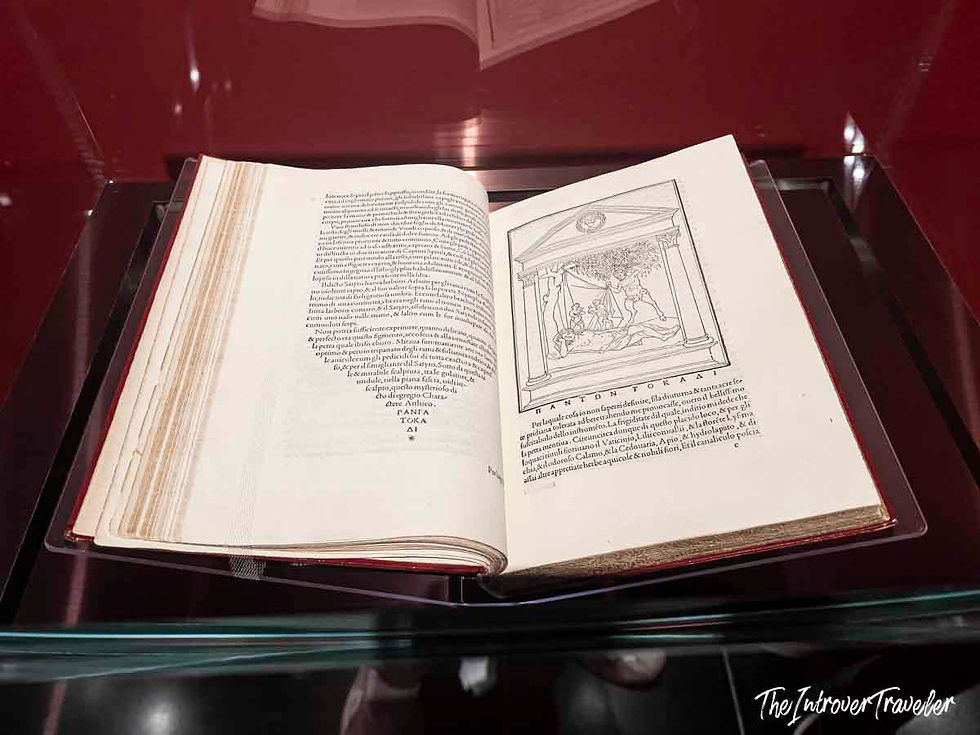
A multidisciplinary exhibition
If the most sensational works exhibited in the exhibition belong to the graphic and bibliographic field, there is no lack of important works belonging to other disciplines, often an expression of Venetian culture; from The Tempest and The Old Woman by Giorgione, on loan from the same Gallerie dell'Accademia, to the "Double Portrait" by Tullio Lombardo, to the Antinous of the National Archaeological Museum of Naples. These are obviously important works that however are not comparable to the graphic and bibliographic masterpieces that constitute the main nucleus of the exhibition.
The strength of the exhibition undoubtedly lies in the logical thread that unites the works, in the curatorial wisdom with which we move from drawing to engraving, from book to fragment, from science to poetry. The human body is examined as an object of desire, knowledge and social representation: the journey passes through the anatomical laboratories of Padua, the studies of the humanists, the ateliers of the painters, and the courts in which a new image of man and woman was elaborated, both in an anatomical and erotic key.
Far from being a didactic exhibition, “Bodies Modern” is configured as a visual and material treatise on integral humanism: a journey through the thought of the body between mechanical deconstruction and ideal sublimation. In this sense, it is an exhibition for scholars, for scholars, for lovers of beauty understood not as a form, but as the outcome of a long humanistic process of Western consciousness.
Conclusion: an unmissable exhibition for drawing lovers and bibliophiles
"Bodies Modern" is an exhibition that stands out for the depth of the project that links the works: to restore to the human body the centrality it had in the Renaissance, not as a simple shell to be represented, but as a threshold between nature and culture, between science and imagination, between finite and divine, between matter and eroticism ; the philological care with which the exhibition was set up is unquestionable, but what characterizes it first of all is the concentration of graphic and bibliographical treasures that will not fail to excite lovers of the two disciplines.















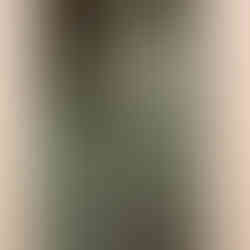






















Comments